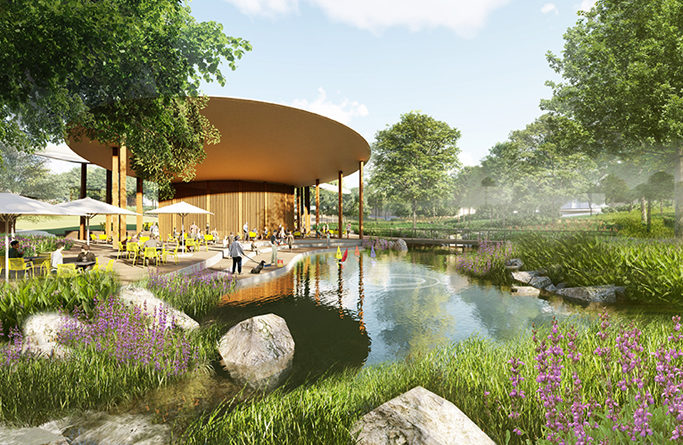
Andrew Taylor is a Project Designer in OJB’s Boston office.
What inspired you to become a landscape architect? Growing up in Australia, you are drawn to the outdoors, consistently surrounded by green or an ever-changing natural landscape. Whether it was hiking, playing sports or helping my parents in the garden, I always found myself outside. I studied horticulture straight out of high school and worked in the landscape construction industries where I was always drawn to the plans and works of landscape architects. I soon learnt the breadth of landscape architecture and the systematic effect landscape architecture can have on ecological, social and economic environments and how we utilize and understand them.
Who as an artist or landscape architect influenced your design and plant materials? Through my academic career, I was fortunate enough to study the work of some extremely talented designers and theoretical minds. But I’d say there are three names that come to mind when thinking of who inspires me. I was privileged enough to have been taught by Richard TT Forman, who’s work in urban ecology has pushed forward the ecological agenda within urban settings, questioning the influences we have on the ecology that we as designers have the privilege to create. Felix Guattari, the French philosopher, was the writer of my favorite theoretical reading from school – ‘The Three ecologies’, questioning the rounded approach that design needs (or doesn’t need) to have on the systems that it influences. Finally, without the Olmsted’s, we may not have landscape architecture as a profession, and we may not have some of the best urban parks in the world (i.e. Central Park), or the best natural parks in the world (i.e. Yosemite), to this day, I love riding along the Emerald Necklace or reading a book at the Arnold Arboretum, both Olmsted designs that changed the way in which Boston lives.
What is your focus when designing? What makes your work rewarding? When thinking about a design, it needs to be thought about in its entirety. It is one thing to have a concept that looks cool or is a ‘wow’ moment within the design, but in my opinion, it is more important to think about the design’s functionality and buildability as a whole. The space needs to be seamless and have every aspect of the design curated to enable the use of everyone.
Where do you go to feel inspired? I find my inspiration from nature more than anything, so I wouldn’t say I go to any one place to be inspired. I’ve been lucky enough to see a wide array of landscapes, both in the US and Australia, and feel strongly about how we utilize and view our landscapes, be it national parks, urban parks, or private gardens. We can learn so much from the environment, I love to get out of my normal space and go camping, a long drive or a bike ride where it is just me, the environment that surrounds me and my thoughts. I used to call mowing the lawn ‘my thinking time’ because it was a task that I could sit back and work through the ideas in my head.
What has been your favorite OJB project to work on and why? I’ve been able to work on a great array of projects, and I can’t say I have any one favorite project. The variety of projects I have worked on, while working in coordination with other OJB team members has been particularly satisfying. It has enabled me to broaden my design skills, learning other methods and design development frameworks from other team members. Particularly enjoyable has been the development of materials for the Cary Downtown Park Project. I have been able to see this project formulate from the beginning. Collaborating with other team members and bring my 3D modelling and representation skills to the team to ensure that the materials that we present to the town are to the highest quality. It will be exciting to see this and many other projects progress.
